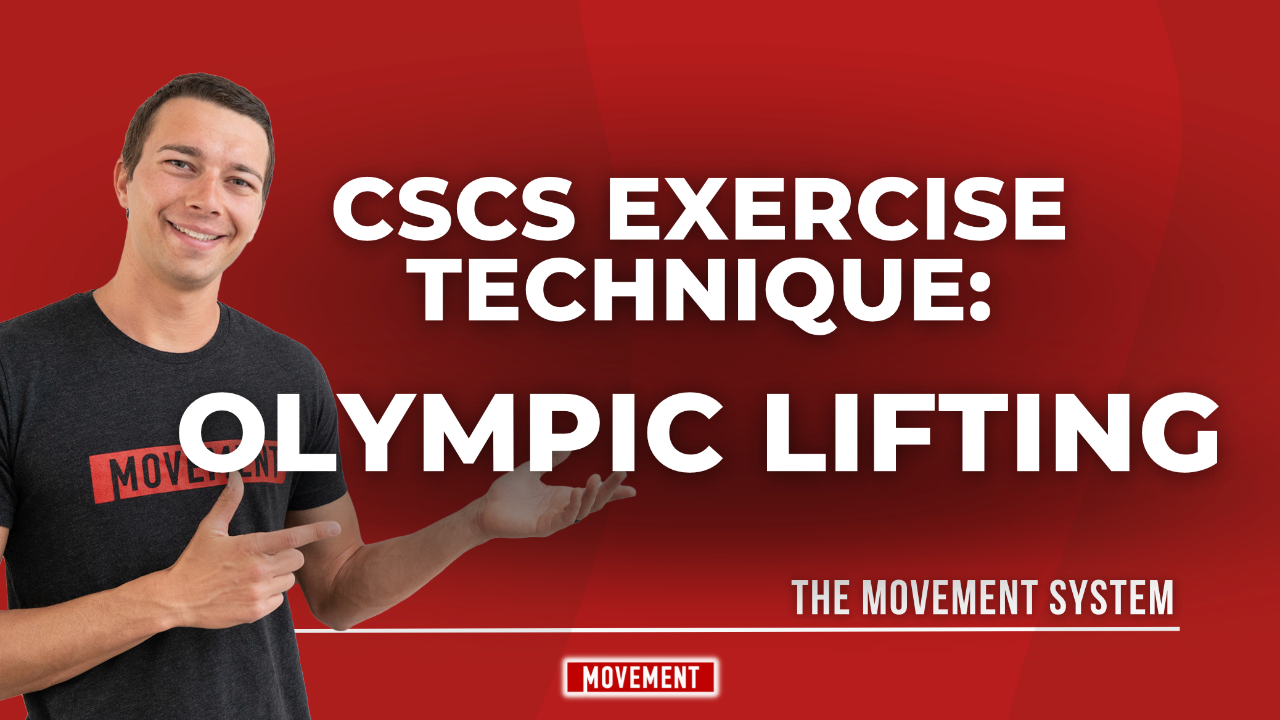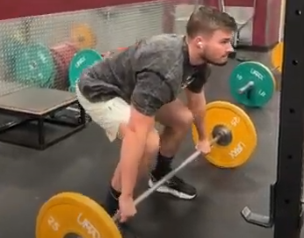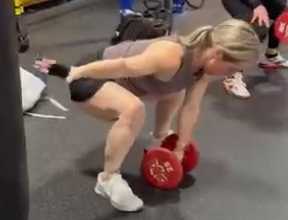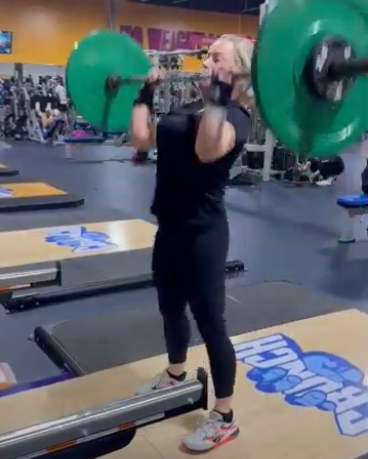CSCS Olympic Lifting Exercise Technique
Feb 25, 2025
Edited by: Danielle Abel
Olympic lifts are some of the most technically demanding yet rewarding movements in strength and conditioning. Whether you're preparing for the Certified Strength and Conditioning Specialist (CSCS) exam or refining your coaching eye, understanding the key technique considerations for these lifts is essential.
Barbell Snatch
The barbell snatch is a full-body explosive lift that requires proper sequencing and mobility. Common errors in technique include a rushed first pull, poor hip extension, and an improper catch position. A smooth, controlled first pull ensures the bar stays close to the body and doesn't drift forward. In the second pull, achieving full triple extension (ankle, knee, and hip) maximizes power output. The catch phase requires strong overhead stability with externally rotated shoulders and proper thoracic extension.
🔴 Common Technique Mistakes:
- Rushing the first pull, leading to poor bar control
- Hips rising before the knees, creating a "good morning" position
- Not keeping the bar close to the body during the transition (see the image below that depicts this)
- Failing to achieve full triple extension (ankle, knee, hip) in the second pull
- Catching with bent elbows and improper shoulder positioning

✅ Optimal Technique Cues:
- Set up with feet hip-width apart and grip slightly wider than the hips.
- Keep chest up, eyes forward, and elbows pointed out during the pull.
- Maintain a vertical shin angle as the bar passes the knees.
- Extend forcefully into triple extension to generate maximum power.
- Catch the bar with external shoulder rotation, wrist extension, and a stable thoracic position.
💡 Tip: "Keep the bar close like a zipper" to maintain efficiency.
Single Arm Dumbbell Snatch
The single-arm dumbbell snatch mimics the power development of a barbell snatch but provides greater unilateral strength benefits. One of the most common mistakes is failing to extend the hips and knees together, leading to an inefficient pull. Instead of muscling the dumbbell up with excessive arm movement, athletes should focus on a forceful hip drive and shoulder shrug. The catch position should be stable, with the arm fully extended as the body receives the load in a quarter squat.
🔴 Common Technique Mistakes:
- Dropping the hips too low, leading to an improper start position (see image below that depicts this)
- Letting the dumbbell drift away from the body instead of keeping it tight
- Extending the hips before the knees, disrupting the power transfer
- Muscling the dumbbell up instead of using hip drive and a shoulder shrug

✅ Optimal Technique Cues:
- Start with hips slightly above knee level, chest up, and shoulders stacked over the dumbbell
- Extend the hips and knees together, keeping the dumbbell close to the body
- Keeping the elbows fully extended during the pull
- At the same time as triple extension occurs, shrug the shoulder to initiate the movement
- Lower the dumbbell from overhead to the shoulder, then thigh, then floor—never drop it straight down
💡 Tip: Think of this movement as an explosive jump—your lower body initiates the power, not your arms
Barbell Push Press
The push press is a dynamic way to train overhead pressing strength while reinforcing lower body power transfer. A common error is too much or too little dip before driving the bar overhead. The dip phase should be controlled and limited to about 10% of the athlete’s height—any deeper can lead to energy leaks. Proper bar placement on the shoulders is key; the bar should rest on a strong base created by slightly protracted shoulder blades, not floating in the air.
🔴 Common Technique Mistakes:
- An excessive or insufficient dip before pressing
- Holding the bar without proper wrist and forearm alignment
- Pushing from a static position instead of using leg drive (see image below that depicts this)
- Catching the bar too far forward, leading to instability

✅ Optimal Technique Cues:
- Grip the bar slightly wider than shoulder-width, with elbows under the wrists
- Create a shelf by resting the bar on the anterior deltoids and clavicles
- Keep the dip controlled, flexing the hips and knees to about 10% of your height
- Drive through the ankles, knees, and hips, pressing the bar overhead in one smooth motion
- Catch the bar overhead with the torso upright, feet flat, and bar stacked over or slightly behind the ears
💡 Tip: "Dip and drive" for maximum force generation.
Barbell Push Jerk
The push jerk builds on the push press by utilizing a rapid, forceful dip and drive to propel the bar overhead. One major mistake is not dropping into a catch position quickly enough, leading to pressing out the weight instead of locking it out explosively. To execute an efficient push jerk, athletes must push their body down under the bar as they extend their arms. The final receiving position should have a stable base, with knees and hips flexed before extending into a strong, upright stance.
🔴 Common Technique Mistakes:
- Starting stance too wide, wider than shoulder or hip width
- Not dipping and driving the bar in one smooth motion
- Trying to muscle the bar up instead of using lower body power
- Failing to drop into the receiving position, leading to an inefficient press

✅ Optimal Technique Cues:
- Grip the bar slightly wider than shoulders, with elbows under the wrists
- Lower the bar with a controlled dip, keeping the torso upright
- Drive forcefully and drop under the bar quickly, catching it with the knees slightly flexed
- Stand up fully to complete the lift, keeping the bar stacked over the midline
- Control the descent, flexing the hips and knees to absorb impact
💡 Tip: Timing is everything—extend, drop, and stabilize for a solid catch
Summary
Mastering these lifts isn’t just about raw strength—it’s about technique, coordination, and precision. As you prepare for the CSCS exam, focus on these key movement principles to refine your coaching skills and knowledge.
Want more expert breakdowns on training concepts?
Support & Courses Available
Ready for more support to help you prep for the CSCS exam? Join our Facebook Group, “Strength and Conditioning Study Group,” here. Ready for even more? Our 24-module CSCS Prep Course has exercise technique for each chapter of the book completely laid out for you with even more content than what we’ve provided here, plus chapter quizzes to help you pass the NSCA exam; click the link here to check it out.
Stay connected with news and updates!
Join our mailing list to receive the latest news and updates from our team.
Don't worry, your information will not be shared.
We hate SPAM. We will never sell your information, for any reason.

